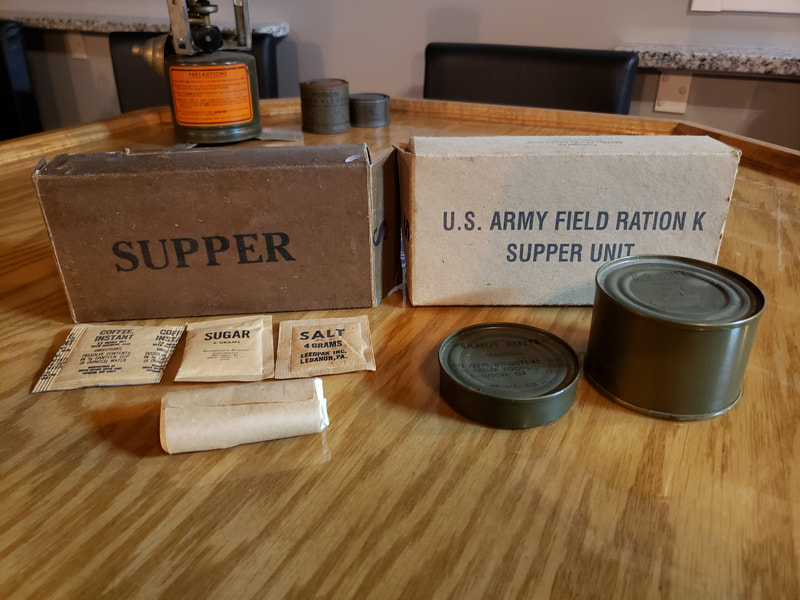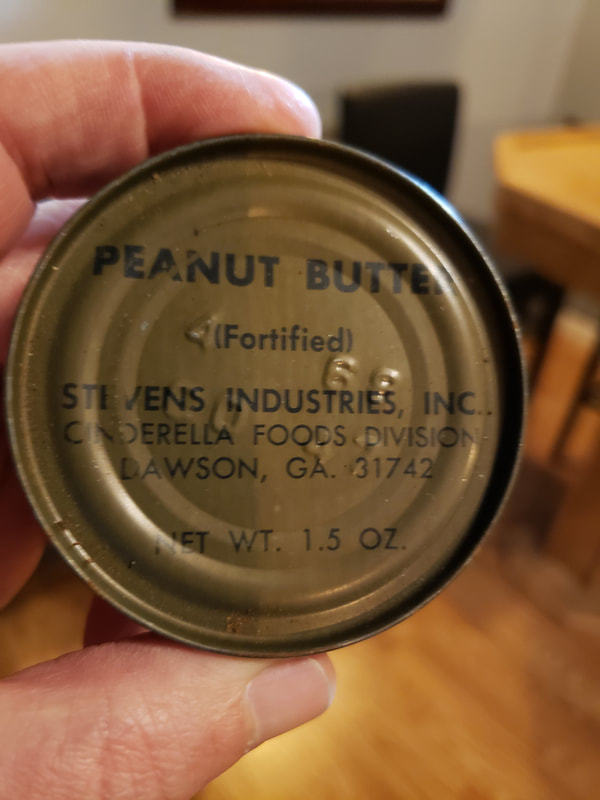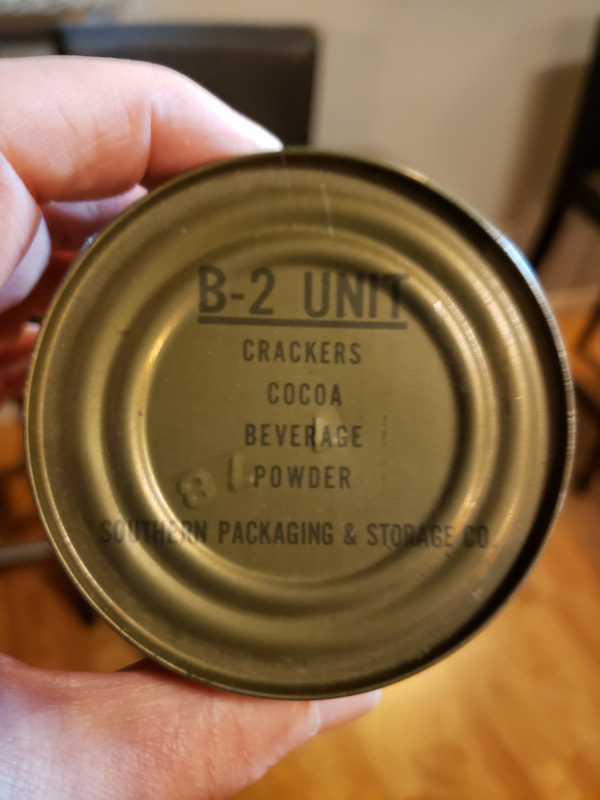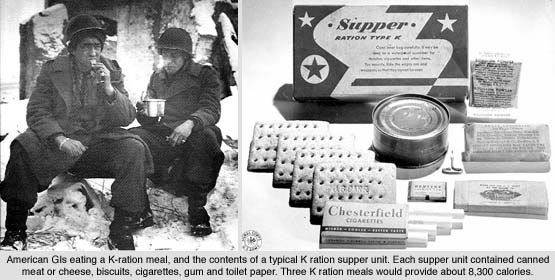|
These pictures show a few items from Army K and C rations and a mess kit we have at the museum.
The following is a description of food rations eaten in World War II: A-ration: Garrison Ration. Fresh, refrigerated, or frozen food prepared in dining halls or field kitchens. The most valued of all rations. B-ration: Field Ration. Canned, packaged, or preserved foods normally prepared in field kitchens without refrigeration. C-ration: Individual Ration. A complete pre-cooked, ready-to-eat canned individual meal. K-ration: Individual Ration. Designed as a short duration individual "assault" ration for paratroopers and other specialized light infantry forces. D-ration: Emergency Ration. Bars of concentrated chocolate combined with other ingredients to provide high calorie content. A-rations were generally whatever meat and produce could be obtained locally, so there could be great variety from one theatre of operations to the next. B-rations were generally used when there was inadequate refrigeration for perishable A-rations. The composition of the D-ration did not change much throughout the war but the C-ration developed many variations. A- and B-rations were only served at bases or established camps in rear areas as they require cooking. C-rations could be eaten hot or cold and required no special preparation or storage, so these could be served almost anywhere. The K-ration was an individual daily combat food ration which was introduced by the United States Army during World War II. It was originally intended as an individually packaged ration for issue to airborne troops, tank crews, motorcycle couriers, and other mobile forces for short durations of only 2 to 3 days. The K-ration provided three separately boxed meal units: Breakfast, Dinner, and Supper. The two parts of the M1938 mess kit, also known as a meat can, could be fastened together as seen in these pictures. The flat-bottomed part with its folding handle extended could serve as a crude skillet to cook raw food, but it was too shallow and thin to be effective for this purpose. Instead, it was usually used for heating up pre-cooked canned food, or for reconstituting powdered eggs. Several versions of the meat can were produced for the Army since this item was first introduced in 1874. To complement the mess kit, soldiers used a stamped cup especially molded to fit over the bottom of the US Army's standard one-quart (950 ml) canteen. This cup could be used to boil water for coffee, or for heating or reconstituting soup or other foods.
0 Comments
Leave a Reply. |
AuthorWelcome to the CAF MN Wing Blog. You will find information on projects we are working on, upcoming events, and more. Archives
April 2024
Categories
All
|







 RSS Feed
RSS Feed